ABSTRACT
During the Vietnam war from 1961 to 1971, the US Army used more than 71.7 million liters toxic chemicals of dioxin of dioxin, causing the pollution in many areas in Vietnam. Especially, Bien Hoa, Da Nang, Phu Cat and A So are with a total of nearly 735,000 m 3 of contaminated soil and sediment. With the effort of Vietnam government, Ministry of Defense and the support of international organizations, to date, Vietnam has isolated and landfilled over 220,990 m 3 of Agent Orange/Dioxin contaminated soil at Bien Hoa, Da Nang and Phu Cat airbases, completed the remediation of 94,593 m 3 of Agent Orange/Dioxin contaminated soil by In-Pile Thermal Desorption (IPTD) at Da Nang airbase and is treating 35,000 m 3 of Agent Orange/Dioxin contaminated soil at A So by isolated and landfilled technology. In the future, the whole Agent Orange/Dioxin contaminated soil in Vietnam should be completely remediated by a suitable technology. Various studies and experiments have been carried out to select the treatment technology for the complete removal of Agent Orange/Dioxin. Among them, United States Agency International Development (USAID) has evaluated and selected Thermal Conductive Heating (TCH) technology as the most suitable technology to treat contaminated soil and sediments at Bien Hoa airport.
1. INTRODUCTION
During the war from 1961 to 1971, the US Army used about 80 million liters of herbicides in South Vietnam in Operation Ranch Hand, to defoliate forests and destroy crops [3]. In which, there are more than 71.8 million liters of agent orange, white matter, blue substance, purple substance and pink substance prepared from compounds of 2,4-diclophenoxyacetic acid (2,4-D); 2,4,5-trichlorophenoxyacetic (2,4,5-T) and picloram [3], [6], [8]. In 1969, the US National Institutes of Health published evidence that 2,4,5-T was a teratogen and was later found to be caused by dioxin. Dioxin has a concentration of approximately 30 ppm in 2,4,5-T samples, which is an impurity generated during the synthesis of 2,4,5-T [7], [8]. The estimated total amount of dioxins in herbicides containing 2,4,5-T used in Vietnam ranges from 130 kg to 144 kg [2], [6].
According to the investigation of the 10-80 Committee, in Vietnam, there are 28 hot spots of dioxin contamination, including military airfields and field airfields that have been used in the herbicide spraying campaign. In which, the airports of Bien Hoa, Da Nang, Phu Cat and A So are heavily affected areas of Agent Orange/dioxin with dioxin contamination concentrations higher than the allowable limit. These areas have negative impacts on the environment and people in the short and long term. The total amount of dioxin contaminated soil at four airports is about 735,000 m 3 [2], [3], [6], [8].
 |
| Figure 1: The rate of spraying of herbicides during the war in Vietnam |
With the efforts of the Government, the Ministry of National Defense of Vietnam and the help of international organizations such as: United Nations Development Organization (NDP); United States Agency for International Development (USAID); The Ford Foundation – The Ford Foundation; Department of Development Cooperation of the Czech Republic etc.) and from various sources of funding. To date, Vietnam has been buried more than 220 990 m isolation 3 contaminated soil Orange / dioxin in Bien Hoa Airport, Da Nang and Phu Cat; be thoroughly treated 94 593 m 3 contaminated soil Orange / dioxin by thermal desorption system in the abutment (IPTD) Airport Danang [5]; are conducted 35000 m 3 soil dioxin Airport A comparison with isolated landfill technology.
2. ACHIEVEMENTS OF DIOXIN TOXICATION IN SOIL AND SEDITIES IN VIETNAMHowever, the amount of soil that has been thoroughly treated with dioxin is only a small part of the total amount of contaminated soil that needs to be treated. New isolation landfill technology only prevents Agent Orange/dioxin from spreading to the surrounding environment. In the future, all Agent Orange/dioxin contaminated soils in Vietnam must be thoroughly treated with appropriate technologies.
2.1. Bien Hoa Airport
Bien Hoa Airport is the largest base of Operation Ranch Hand, where 170,000 containers of herbicides are stored and used, each containing 208 liters. In which, there are 98,000 barrels of Agent Orange, 45,000 barrels of white matter and 16,000 barrels of green agent [1].
Since 1990, Vietnam has conducted many projects to assess and analyze the level of dioxin pollution in Bien Hoa. The first soil sample collected and analyzed by the Russian Academy of Sciences had a dioxin concentration of 59,000 ppt. Subsequent studies showed that soil samples had an average dioxin concentration of 35,865 ppt and a special point of dioxin concentration of up to 1,180,738 ppt [1].
From 2006 to 2009, the Army Chemical / Ministry of Defense Vietnam has conducted Project XD-1 to handle more than 94,000 m 3 of land in high concentrations of dioxin tape isolated landfill technology. Among them, more than 3,500 m 3 are processed by landfill technology combined with micro processor. Then, from 2014 to 2016, Army Chemical has conducted 51 516 m burial isolated 3 soil dioxin landfill XD-2 is located on the shelf with landfills XD-1. Among them, 33 516 m 3 contaminated soil in South Airport dioxin levels from 1,275 to 65,500 ppt ppt, 18,000 m 3 in South Z1 from 375 ppt dioxin concentrations up to 13,000 ppt. The results of the Project show that it has effectively prevented the spread of Agent Orange/dioxin to the surrounding environment of the Airport.
According to results of a comprehensive assessment of most of the dioxin contamination in the area of Bien Hoa Airport USAID and the Ministry of Defense Vietnam (Figure 2) shows that the total amount of soil and sediment dioxin estimated from 408 500 m 3 to 495,300 m 3. Of which, 95% of contaminated soil and sediments are located in the Airbase, concentrated in the Pacer Ivy (40 %), Z1 (30 %) and Southwest (10 %) areas [5].
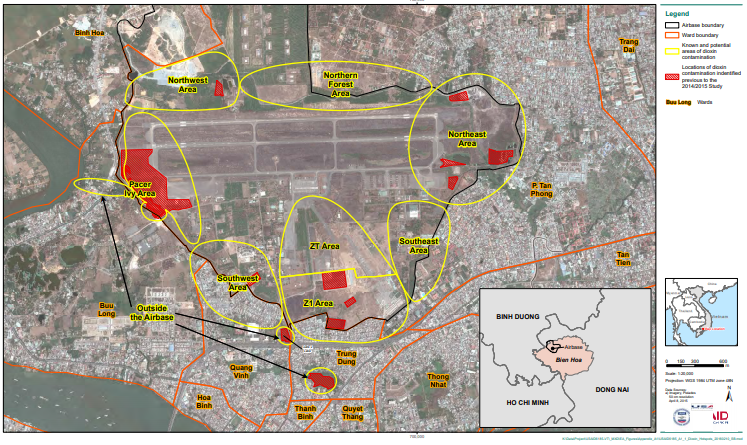 |
| Figure 2: Map of sampling areas at Bien Hoa airport [4] |
In the Pacer Ivy area, many locations have dioxin contamination levels in soil and sediment that exceed the limits set by Vietnam. Especially along the western boundary of the Airbase, the highest dioxin concentrations in this area reached 11,400 ppt, at a depth of 30 – 60 cm below ground level. In addition, dioxin contamination has spread outside the Airport area along the drainage canal in the west of Pacer Ivy area, the highest dioxin concentration is 3,370 ppt [4], [5].
Zone Z1 has a relatively low concentration of dioxins, maximum dioxin concentrations in soil and sediment outside the landfill are 901 ppt and 1,578 ppt, respectively, at a depth of 15 – 30 cm. Dioxin concentrations in the landfill were about 1,510 ppt, lower than expected when the soil was put into the landfill at up to 262,000 ppt. This is a positive result, demonstrating that the relocation of contaminated soil and construction of a landfill have significantly reduced the general dioxin concentration in the Z1 zone [1], [4], [5].
The Southwest region has the highest level of dioxin contamination, with some points reaching 110,000 ppt. In particular, at sampling points with a depth of 120 – 150 cm, the dioxin concentration was still about 2,680 ppt [4]. Two out of three dioxin-contaminated units in the Southwest region have been treated by the Chemical Army/Ministry of National Defense by sequestering landfill technology under Project XD-2.
In addition to the above areas, in the Northwest, Northeast and some points in the ZT zone, dioxin concentrations are above the treatment threshold. The Southeast areas and the Northern Forest and the area outside the Airbase have low dioxin concentrations.
The results of analysis of sediment samples taken in 25 ponds and lakes in Bien Hoa Airport showed that 16/25 ponds and lakes had dioxin concentrations exceeding the threshold of 150 ppt. Lakes in Pacer Ivy and the Northeast had the highest dioxin concentrations detected at 5,410 ppt and 1,300 ppt, respectively. [4], [5]. Which, beginning in 2021, the entire 1,200 m 3 of sediment in lakes Gate 2 has been loaded contact area subsequent treatment at Bien Hoa airport, liberate and restore the entire surface area of the lake Gate 2, meet Vietnam’s dioxin threshold standards.
In addition, the Dong Nai Department of Natural Resources and Environment identified three more areas outside Bien Hoa Airport with relatively high concentrations of dioxins in soil and sediment, at 1,751 ppt, 4,023 ppt and 4,023 ppt, respectively. The total volume of dioxin contaminated soil in these three areas is about 7,510 m 3 [5].
Thus, the situation of dioxin pollution treatment in Bien Hoa will be very expensive and complicated, it is necessary to continue to monitor and evaluate the environment, to zone the area contaminated with dioxin; prevent the spread of dioxins to the surrounding environment; select technology and thoroughly treat dioxins suitable to Vietnam’s conditions.
2.2. Danang Airport
Da Nang Airport is one of the key bases of Operation Ranch Hand, which has sprayed and stored a large quantity of insecticide second only to Bien Hoa Airport. The US military has stored and used 94,900 barrels of the herbicide. In which, there are 52,700 barrels of Agent Orange, 29,000 barrels of white substance and 5,000 barrels of green substance [1].
The analysis results of Hatfield Company conducted in 2010 showed that the storage area and soil loading and washing yard had the highest dioxin concentration at Da Nang Airport. The highest concentration of dioxin detected in the loading area was 365,000 ppt, more than 365 times the cut-off value. In the storage area, some soil samples analyzed had dioxin concentrations of 20,600 ppt [1]. Dioxin was also detected in groundwater samples at a concentration of 0.86 ppt, which proves that dioxin has penetrated deep into the groundwater.
From 2012 to 2018, USAID in cooperation with the Ministry of Defense Vietnam processing 152 567 m 3 of soil and sediment contaminated with dioxin in Danang airport. Among them, 94 593 m 3 of soil and sediment concentrations range from 1,038 ppt of dioxin in 39 252 ppt to be processed thoroughly by the Company’s Systems Terra Therm IPTD through two Phase. The analysis results of soil samples after treatment showed that the soil samples after Phase 1 treatment had dioxin concentrations lower than 100 ppt, and the soil samples after Phase 2 treatment had dioxin concentrations lower than 30 ppt. This result exceeded the project’s initial target of 150 ppt of treated soil. The volume of contaminated soil remaining is 67,974 m 3 dioxin levels below 1,200 ppt buried isolation region EVSA (Excess Volume Storage Area) of the airport, in order to prevent long-term effects to human health and environment. However, the isolated landfill area needs to be monitored every 6 months to ensure that there is no release of dioxins into the environment, and contaminated soil should continue to be thoroughly treated when the technology is selected. Suitable.
2.3. Phu Cat Airport
Phu Cat Airport in Binh Dinh Province was the base of Operation Ranch Hand from 1968 to 1970. This airfield was used to store 28,900 barrels of herbicides, including 17,000 barrels of Agent Orange, 9,000 barrels of Agent Orange. White and 2,900 barrels of green matter.
Since 1999, Vietnam has conducted a survey of dioxin residues at this airport and discovered that the dioxin contaminated area has an area of about 2,000 m 2, the highest concentration of dioxin in the storage area is 49,500 ppt. The average temperature was 11,400 ppt, the dioxin concentration at a depth of 90 cm was 926 ppt [1], [3]. Then, the Office of National Steering Committee 33 together with the Vietnam-Russia Tropical Center and Hatfield have identified another area of dioxin measuring 400 m 2, high concentrations of dioxin that is found to be 89 879 ppt dioxin concentrations average 3,000 ppt. At several lakes in the Airbase, dioxin concentrations in sediments ranged from indeterminable levels up to 127 ppt [4]. The total amount of soil and sediment contaminated with Agent Orange/dioxin at Phu Cat Airbase is 7,500 m 3 [1], [4].
In 2012, the Government of Vietnam organized and cooperated with UNDP and the Global Environment Fund (GEF) to treat the entire amount of soil and sediment contaminated with Agent Orange/dioxin at Phu Cat Airport by technology. Burial [1], [3]. However, the isolated landfill area needs to be monitored every 6 months to ensure that there is no release of dioxins into the environment, and contaminated soil should continue to be thoroughly treated when the technology is selected. Suitable.
2.4. A So Airport
A So Airport is located in A Luoi district, a highland district of Thua Thien Hue province. During the war, from 1963 to 1966, the US used A So valley as a field airport, storing 7,900 barrels of herbicides and as a transit station for the US Air Force to spray herbicides in the area. Central region. Therefore, Thua Thien Hue province in general and A Luoi district in particular is one of the areas heavily affected by Agent Orange/dioxin. The whole province has nearly 16,000 people infected with Agent Orange/dioxin, and 5,000 people in A Luoi district alone. The survey results show that the dioxin contaminated area is estimated at 50,000 m 2, the average pollution depth is about 70 cm, and the total volume of contaminated soil to be treated is 35,000 m 3. Among them, about 6,600 m 3 contaminated soil dioxin levels above 200 ppt, especially with the points up to 646 levels of dioxin TEQ ppt. With the permission of the Prime Minister, the Ministry of National Defense of Vietnam has approved the project: “Treatment of dioxin-contaminated soil at A So airport in A Luoi district, Thua Thien Hue province” and assigned to the main Chemical Army. Maintain implementation. Currently, the Chemical Army is treating contaminated soil at A So Airport by sequestering landfill technology. At the same time, continue to research and propose to thoroughly treat Agent Orange/dioxin contaminated soil with technology suitable to economic and technical conditions in Vietnam.
3. PROSPECTS OF AUTO/DIOXIN SOIL DEPOSITION IN VIETNAM
Because the characteristics of Agent Orange/dioxin pollution in hot spots in Vietnam are complicated by high pollution concentrations, uneven pollution levels, huge amounts of contaminated soil and sediment, and the cost of thorough treatment. To be very costly. Therefore, the thorough handling of Agent Orange/dioxin in Vietnam is a difficult problem, challenging domestic and international scientists, technology and managers. Therefore, in recent years, the Government of Vietnam and international organizations have made great efforts to implement many programs and projects aimed at accelerating the process of dioxin detoxification in Vietnam such as: modern technological equipment for sampling, analysis, research and treatment of dioxins; dioxin monitoring; implementing research projects to select dioxin treatment technology suitable to Vietnam’s conditions; testing, evaluating, selecting and applying technology to treat Agent Orange/dioxin contaminated soils and sediments in hot spots in Vietnam.
In Vietnam, a number of dioxin treatment technologies have been tested and applied such as: Isolation landfill technology; Biotechnology; New Zeland’s Chemical Decomposition (MCD) Technology; TCH technology, specifically IPTD system; Soil washing technology of Shimizu Corporation (Japan).
Isolation landfill technology is the least expensive technique. The technique of this technology is the collection, storage and long-term isolation of contaminated soil and sediment, to prevent contamination from spreading to the environment. However, this technology has the disadvantage of not eliminating the toxicity of dioxins and the potential for re-contamination.
Biotechnology has been tested in Da Nang and applied in Bien Hoa in Project XD-1. However, because the biological treatment process takes a long time, it is still difficult to confirm the effectiveness of the technology for practical application. Can be applied in practice.
MCD’s technology has also been tested to treat 150 m 3 at Bien Hoa Airport in 2009. This technology has some limitations such as large power consumption, small processing capacity, and difficulty in controlling dust. Environment and is less effective when treating soil contaminated with dioxins with high and very high concentrations.
IPTD technology system of globalization has processed 94 593 m 3 in Da Nang to effectively handle high dioxin, but levels of dioxin in the exhaust gas and waste water is still high and are forced to use activated carbon to adsorb. A large amount of by-products including 477 tons of activated carbon, 172 tons of liquid waste, and 286 tons of solid waste must be shipped to France and Switzerland for further treatment. This proves that applying IPTD system still needs the support of other technologies.
Recently, Shimizu Corporation cooperated with the Center for Environmental Treatment Technology to test Bien Hoa soil treatment with soil washing technology. The test results of washing 890 tons of soil divided into 12 types of soil with dioxin concentrations from 1,200 ppt to 20,000 ppt showed that the washed and oversized soil was obtained from 59 to 74%, with an average of 65%., with dioxin content of QCVN 45 for urban, recreational and commercial land; The part of sludge cake with dioxin concentration above 12,000 ppt, accounting for from 26% to 41%, on average is 35% and needs to be further treated with the next technology. In addition, samples of soil, water, and air around the treatment area are also analyzed, evaluated, and guaranteed to be safe during and after the test. And surrounding area.
After testing the soil washing technology, Shimizu Corporation cooperated with TerraTherm Asia Company to test the Heating Box System and the Heating Box System combined with Thermal Oxidation to treat mud cake of soil washing technology. System results The heating box combined with thermal oxidation has the best dioxin removal efficiency in the mud cake, the dioxin concentration after treatment is less than 100 ppt. Economic efficiency of soil washing technology combined with the Heating Box System combined with Thermal Oxidation will be more economical than TCH technology.
From 2019 to 2020, USAID assessed 22 dioxin treatment technologies [5]. The results of the Phase 1 assessment show that only TCH technology meets all 9 criteria, 5 technologies meet 7 criteria except for the criterion of expected cost and the approval of partners in the project. Government of Vietnam, that is: Incinerator technology; plasma arc technology and pyrolysis; base-catalyzed de-adhesion technology; supercritical and subcritical water treatment technology; gas phase chemical reduction technology. Therefore, Phase 2 of the evaluation process will no longer serve the purpose of comparing technologies. However, the TCH technology is further evaluated, scoring according to the criteria and weights in Stage 2. The results can be used to evaluate and compare if there is a certain technology, identified in the TCH. Future, meet all the screening criteria in Stage 1. With the results of this assessment, TCH technology is the remediation/remediation technology that has been unanimously selected to treat 408,500 m 3 of contaminated soil. Dioxins in the Bien Hoa Airbase area with a treatment cost of approximately USD 880/ton, based on approved screening criteria [5].
4. CONCLUSION
From the practical implementation of the remediation of Agent Orange/dioxin pollution in recent years, it has been shown that in order to be able to promptly prevent and minimize the harmful effects of Agent Orange/dioxin, in order to limit the adverse effects on humans. And the environment, the following measures should be taken simultaneously:
- Preventing temporary spillover when there is no thorough treatment technology and guaranteed financial source;
- Among 22 evaluated technologies, TCH technology is the remediation/remediation technology that has been unanimously selected to treat dioxin-contaminated soil at Bien Hoa Airport. When applying this technology at Bien Hoa Airport, it is necessary to overcome the disadvantages of applying the IPTD System at Da Nang Airport.
- Continue to conduct research, test, and select technology to thoroughly treat Agent Orange/dioxin in soil and sediment suitable to Vietnam’s conditions.
- The post-treatment areas need to be monitored and evaluated for the environment; Epidemiological investigation, disease structure, medical assessment of spillover areas and medical care support to reduce environmental impact. Landfill areas need to be monitored every 6 months to ensure that dioxins cannot leak out.
- Maximize mobilization of financial resources from Governments and NGOs in supporting Vietnam in overcoming the consequences of Agent Orange/dioxin.
Chemical Army-Ministry of Defense
REFERENCES
- Lam Vinh Anh et al. (2016), “Research and selection of technologies to thoroughly treat dioxins in soil and sediments suitable to Vietnamese conditions”, Summary report of State-level scientific and technological research projects, code: KHCN 33.02/11-15.
- Young Alin L. (2012), History, use, distribution and environmental persistence of Agent Orange, Spiner.
- Le Ke Son – Charles Bailey (2018), From defender to partner, World Publishing House.
- USAID (2016), Environmental Assessment of Dioxin Contamination at Bien Hoa Airport, United States Agency for International Development.
- USAID (2020), Bien Hoa Airport Area Dioxin Contamination Project Master Plan, United States Agency for International Development.
- Hites Ronald A. (2011), “Dioxin: An Overview and History”, Environ. Sci. Technol., 45, pp. 16 – 20.
- Wu Wenhao, Chen Wei, Lin Daohui, Yang Kun (2012), “Influence of Surface Oxidation of Multiwalled Carbon Nanotubes on the Adsorption Affinity and Capacity of Polar and Nonpolar Organic Compounds in Aqueous Phase”, Environmental Science and Technology, 46, pp. 5446 – 5454.
- Young A. L., Reggiani G. M. (1988), Agent Orange and its associated dioxin: assessment of a controversy, Elsevier, pp. 32 – 66.




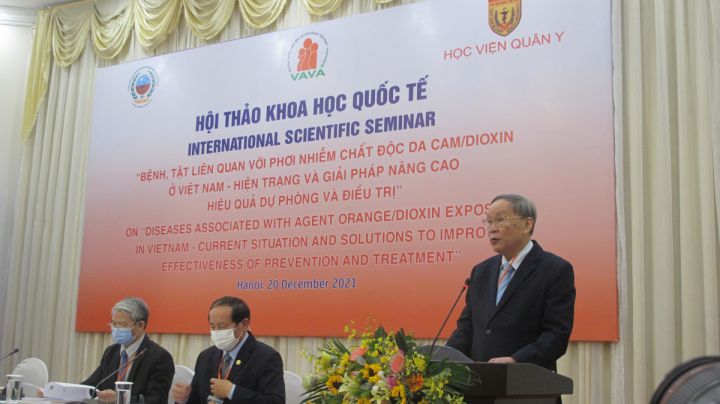

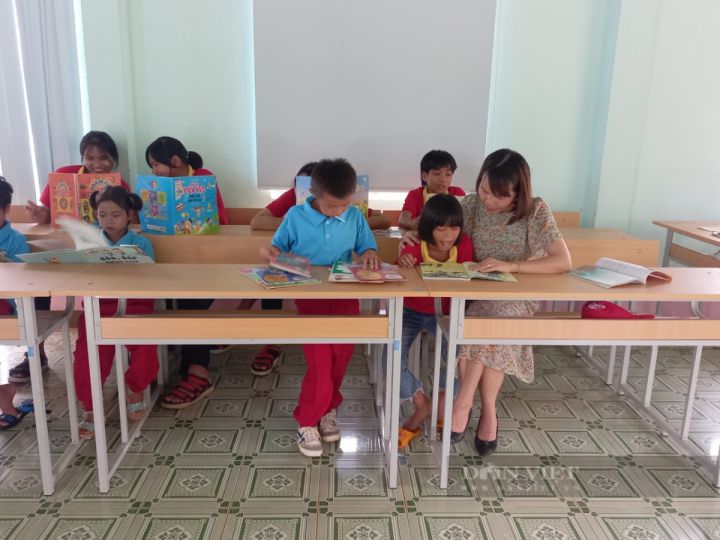
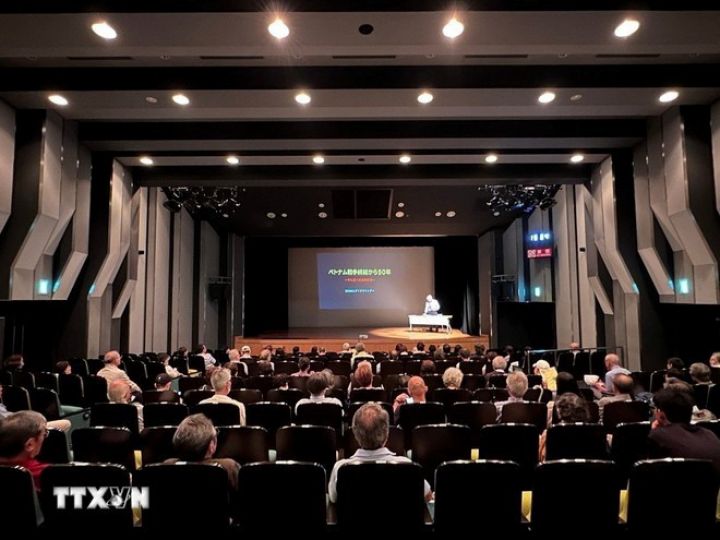


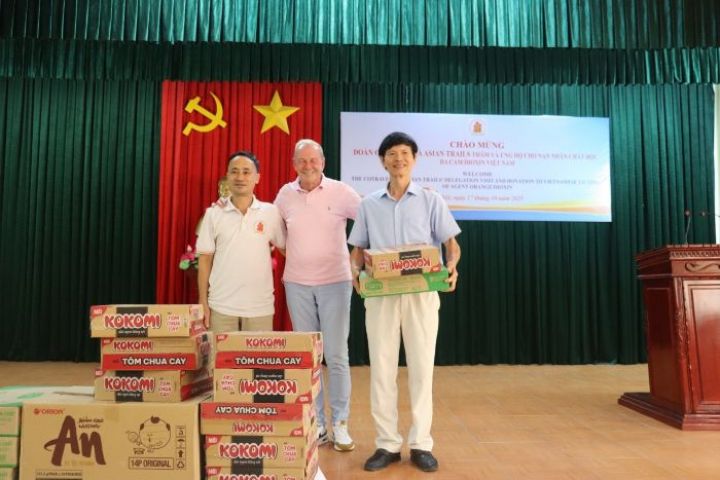












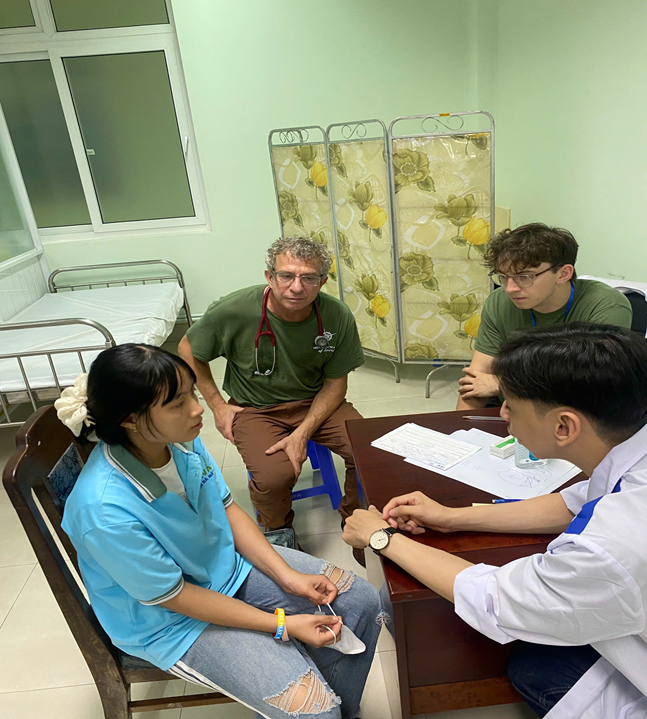
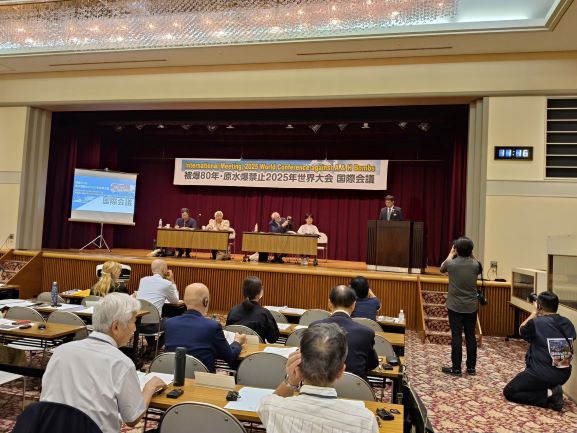
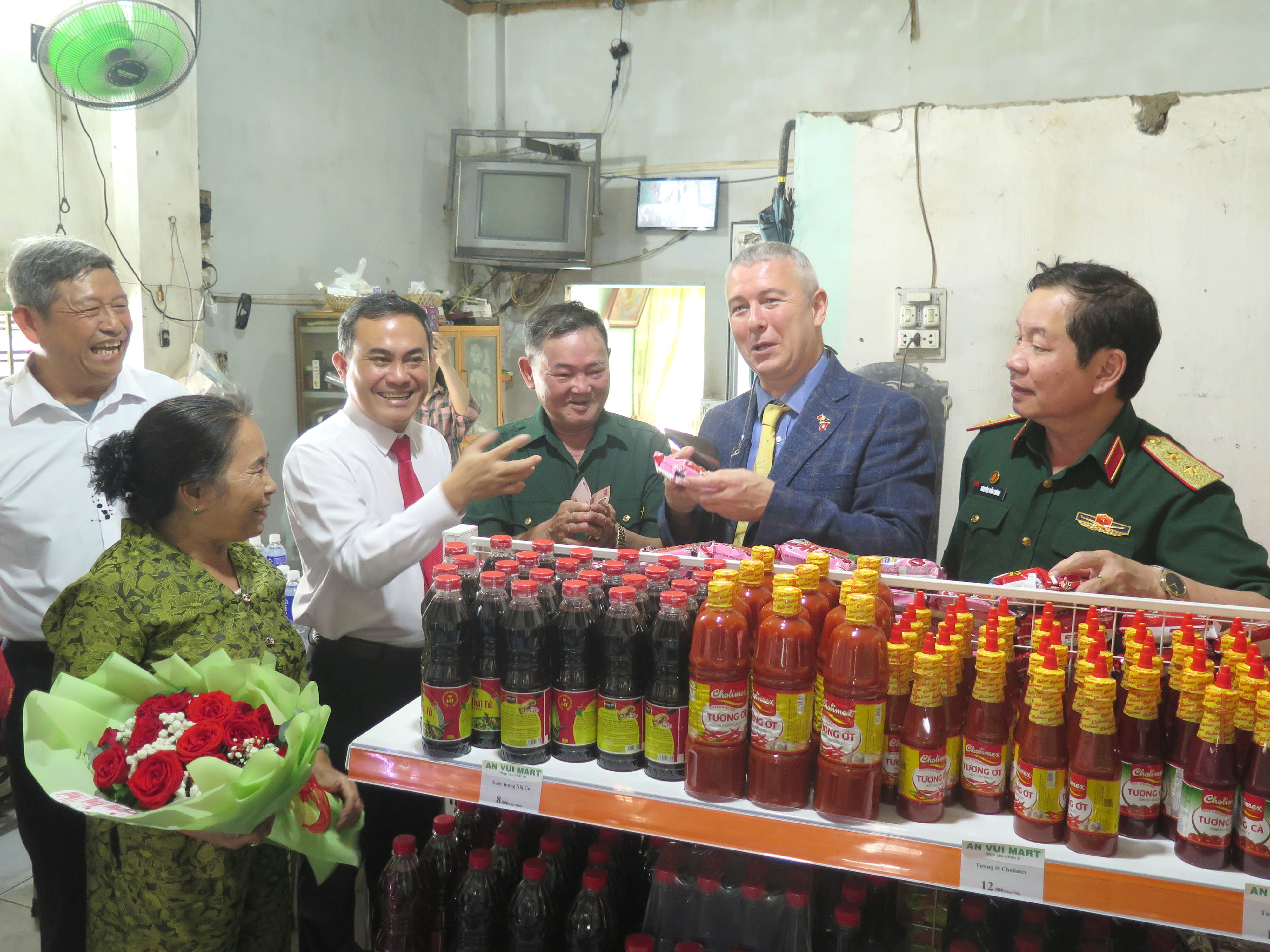
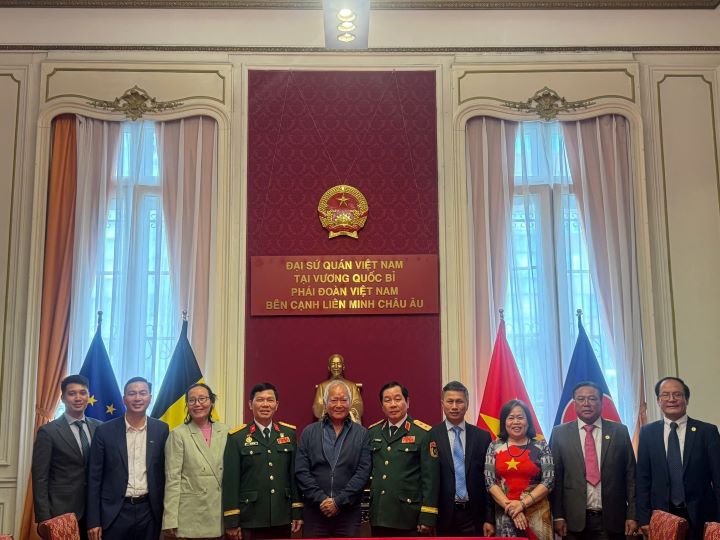

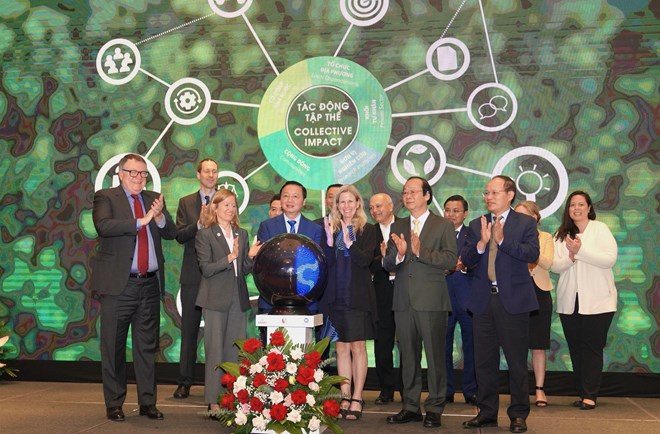

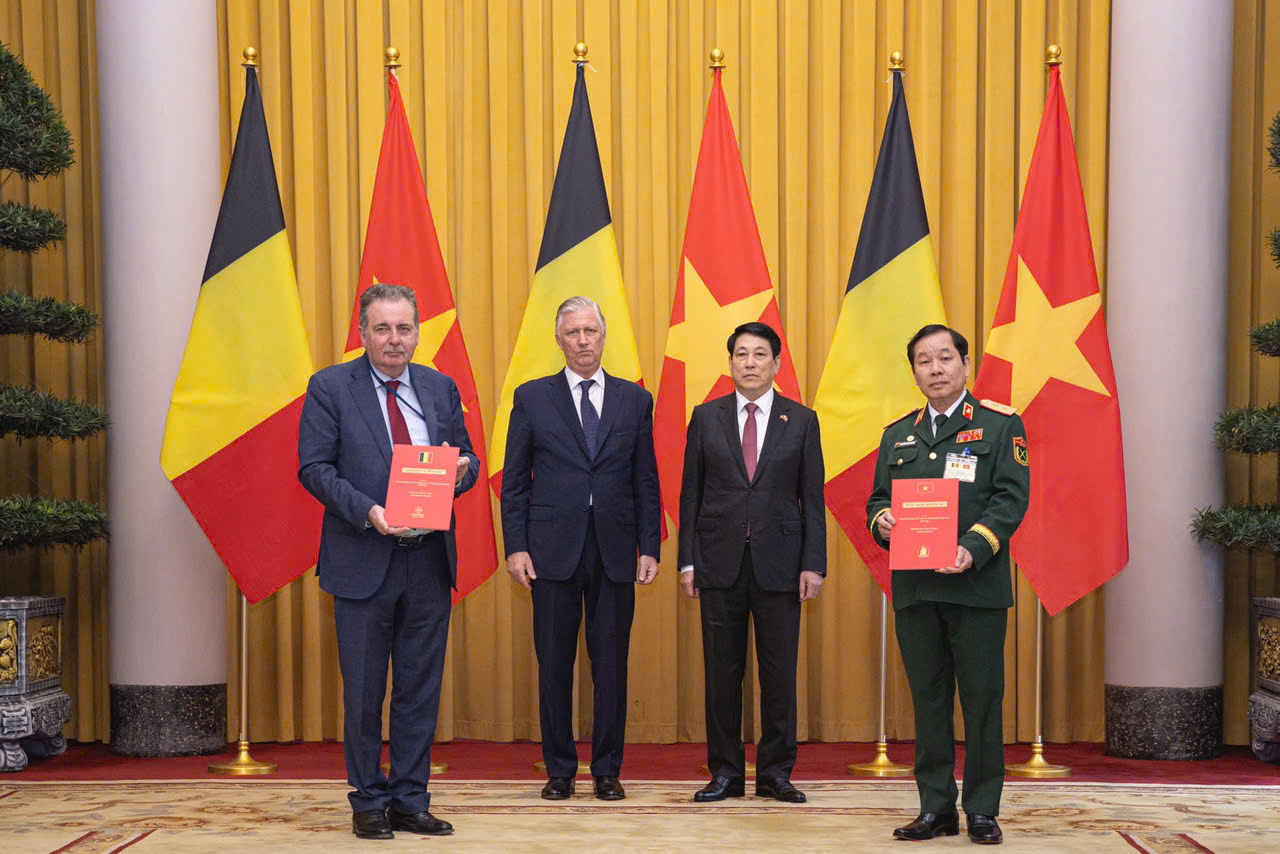


.jpg)
Comment